Study on Filling Material Strength and Dam Failure Characteristics of Loess Dam
Abstract
1. Introduction
2. Materials and Methods
3. Results
3.1. Indoor Triaxial Tests
3.2. Numerical Modeling and Field Data of Dam Progressive Failure
4. Discussion
- (1)
- The failure forms of remolded loess are affected by confining pressure, moisture content, and dry density. Under the conditions of low confining pressure, low moisture content, and high dry density, there is significant shear plane and shear dilatancy. Under the conditions of high confining pressure, high moisture content, and low dry density, the samples exhibited swelling failure, volume reduction, and shear shrinkage.
- (2)
- Water content and dry density will change the shear performance of loess, especially the internal friction angle. At a low dry density, the increase in water content causes the internal friction angle to decrease. However, when the dry density is 1.7 g/cm3, due to the small internal porosity, the movement of soil particles caused by external force will again make the soil particles tightly mesh. When the water content is 10% or 15%, the water film on the surface of the particles is thinner and does not play a significant role. When it is raised to 20%, the water film thickens and the lubricating effect is more significant. When the water content is 25%, the water film inside the sample dissolves a large amount of cemented material, no longer has a lubricating effect, and at the same time resists some external force, so the internal friction angle increases.
- (3)
- By conducting a horizontal orthogonal test of the remolded soil sample and a simulation of the progressive failure process of the loess dam, it was found that when the loess dam sheared, a shear failure surface formed. The shear failure surface gradually shifts to the water surface after the loess is washed, and finally, instability occurs. In the shear test, it is found that when the water content is low, it is also easy to form a shear failure surface similar to dam failure, which is in line with the law of the dam’s gradual water absorption failure.
- (4)
- In this work, the shear characteristics of unsaturated remolded loess are studied. However, in the actual loess accumulation dam project, the shear failure surface of the dam is affected by water pressure and pore water pressure, and the parameters of the undisturbed soil samples of the loess dam may change under the infiltration of water. Therefore, the data obtained in the test may be different from the actual loess dam materials in the case of failure. Moreover, the flow scouring effect of seepage water in the process of dam failure is not considered. Therefore, the conclusion of the test can only be used as a qualitative analysis, which can provide reference for the design, construction and reinforcement of the loess dam. We have studied the improvement of local loess, and a small amount of attapulgite and nano-montmorillonite can greatly improve the shear strength of loess. We also conducted a corresponding study on saturated remolded loess, and monitored the damage process on site. We found that the dam experienced three significant instances of damage during the monitoring period (XU 2020) [23], which was due to the gradual formation of loess via water infiltration. According to the results of the test, we improved the local loess. Adding a small amount of attapulgite and nano-montmorillonite can greatly improve the shear strength of loess (Cao 2021) [24].
Author Contributions
Funding
Institutional Review Board Statement
Informed Consent Statement
Data Availability Statement
Conflicts of Interest
References
- Zheng, H.; Lin, H.; Zhou, W.W.; Bao, H.; Zhu, X.J.; Jin, Z.; Song, Y.; Wang, Y.Q.; Liu, W.Z.; Tang, Y.K. Revegetation has increased ecosystem water-use efficiency during 2000–2014 in the Chinese Loess Plateau: Evidence from satellite data. Ecol. Indic. 2019, 102, 507–518. [Google Scholar] [CrossRef]
- Liu, D.S. The Loess Deposits in China; Science Press: Beijing, China, 1965; pp. 1–10. [Google Scholar]
- Lan, H.X.; Lee, C.F.; Zhou, C.H.; Martin, C.D. Dynamic characteristics analysis of shallow landslides in response to rainfall event using GIS. Environ. Geol. 2005, 47, 254–267. [Google Scholar] [CrossRef]
- Liu, X.; Zhang, N.; Lan, H.X. Effects of sand and water contents on the small-strain shear modulus of loess. Eng. Geol. 2019, 260, 105202. [Google Scholar] [CrossRef]
- Yan, C.G.; Wan, Q.; Xu, Y.; Xie, Y.; Yin, P. Experimental study of barrier effect on moisture movement and mechanical behaviors of loess soil. Eng. Geol. 2018, 240, 1–9. [Google Scholar] [CrossRef]
- Wang, J.D.; Zhang, D.F.; Wang, N.Q.; Gu, T.F. Mechanisms of wetting-induced loess slope failures. Landslides 2019, 16, 937–953. [Google Scholar] [CrossRef]
- Wen, B.P.; Yan, Y.J. Influence of structure on shear characteristics of the unsaturated loess in Lanzhou, China. Eng. Geol. 2014, 168, 46–58. [Google Scholar] [CrossRef]
- Xing, Y.C.; Gao, D.H.; Jin, S.L.; Zhang, A.J.; Guo, M.X. Study on Mechanical Behaviors of Unsaturated Loess in terms of Moistening Level. KSCE J. Civ. Eng. 2019, 23, 1055–1063. [Google Scholar] [CrossRef]
- Liang, C.Y.; Cao, C.; Wu, S. Hydraulic-mechanical properties of loess and its behavior when subjected to infiltration-induced wetting. Bull. Eng. Geol. Environ. 2016, 77, 385–397. [Google Scholar] [CrossRef]
- Gao, D.H.; Chen, Z.H.; Guo, N.; Zhu, Y.P.; Hu, S.X.; Yao, Z.H. The influence of dry density and matric suction on the deformation and the strength characteristics of the remolded unsaturated loess soils. Chin. J. Rock Mech. Eng. 2017, 36, 221–229. [Google Scholar] [CrossRef]
- Xing, X.L.; Li, T.L.; Fu, Y.K. Determination of the related strength parameters of unsaturated loess with conventional triaxial test. Environ. Earth Sci. 2016, 75, 82. [Google Scholar] [CrossRef]
- Ni, P.P.; Mei, G.X.; Zhao, Y.L. Influence of Raised Groundwater Level on the Stability of Unsaturated Soil Slopes. Int. J. Geomech. 2018, 18, 04018168. [Google Scholar] [CrossRef]
- Yang, X.H. Study on Strength Property of Unsaturated Remolded; Dissertation, Northwest A&F University: Yanglin, China, 2008. (In Chinese) [Google Scholar]
- Dang, J.Q.; Jiang, C.L.; Ji, Z.L. Effects of Shear Rate on Mechanical Behavior of Structured Loess. Chin. J. Undergr. Space Eng. 2009, 5, 459–462. [Google Scholar]
- Wang, J.J.; Hao, Y.Z.; Wang, T.H. Experimental study on structural characteristics of unsaturated compacted loess. Rock Soil Mech. 2019, 1351–1357. [Google Scholar] [CrossRef]
- Luo, A.Z. Debugging of a New True Triaxial Apparatus and Experiment Study on the Strength-Deformation Characteristic of Remolded Loess; Dissertation, Northwest A&F University: Yanglin, China, 2008. (In Chinese) [Google Scholar]
- Dijkstra, T.A.; Rogers, C.D.F.; Smalley, I.J.; Derbyshire, E.; Li, Y.J.; Meng, X.M. The loess of north-central China: Geotechnical properties and their relation to slope stability. Eng. Geol. 1994, 36, 153–171. [Google Scholar] [CrossRef]
- Patil, U.D. Characterization of Compacted Silty Sand Using a Double-Walled Triaxial Cell with Fully Automated Relative-Humidity Control. Geotech. Test. J. 2016, 39, 742–756. [Google Scholar] [CrossRef]
- Patil, U.D.; Puppala, A.J.; Hoyos, L.R.; Pedarla, A.J. Modeling critical-state shear strength behavior of compacted silty sand via suction-controlled triaxial testing. Eng. Geol. 2017, 231, 21–33. [Google Scholar] [CrossRef]
- Patil, U.D.; Hoyos, L.R.; Puppala, A.J.; Surya, S.C.C. Suction Stress Characteristic Curves of Cohesive-Frictional Soils from Multiple Suction-Controlled Testing Methods. Int. J. Geomech. 2020, 20, 0402077. [Google Scholar] [CrossRef]
- Du, C.; Liang, L.; Yi, F.; Niu, B. Effects of Geosynthetic Reinforcement on Tailings Accumulation Dams. Water 2021, 13, 2986. [Google Scholar] [CrossRef]
- Sainsbury, B.-A.; Gharehdash, S.; Sainsbury, D. Large-scale characterisation of cemented rock fill performance for exposure stability analysis. Constr. Build. Mater. 2021, 308, 124995. [Google Scholar] [CrossRef]
- Xu, J.B.; Wei, W.; Bao, H.; Zhang, K.K.; Lan, H.X.; Yan, C.G.; Sun, W.F.; Wu, F.Q. Study on shear strength characteristics of loess dam materials under saturated conditions. Environ. Earth Sci. 2020, 9, 346. [Google Scholar] [CrossRef]
- Cao, B.H.; Zhao, D.N.; Xu, J.B.; Sun, H.H.; Qi, Y.; Lai, J. Experiment study on mechanical properties of loess improved by nano clays. J. Archit. Civ. Eng. 2023, 40, 138–149. (In Chinese) [Google Scholar]
- Chen, N.Y.; Zhao, D.N.; Wu, X.; Xu, J.B.; Nan, Y.L.; Niu, L.G. Study on Filling Material Strength and Dam Failure Characteristics of Loess Dam, Preprint (Version 1). Available online: https://www.researchsquare.com/article/rs-1222795/v1 (accessed on 5 April 2022).
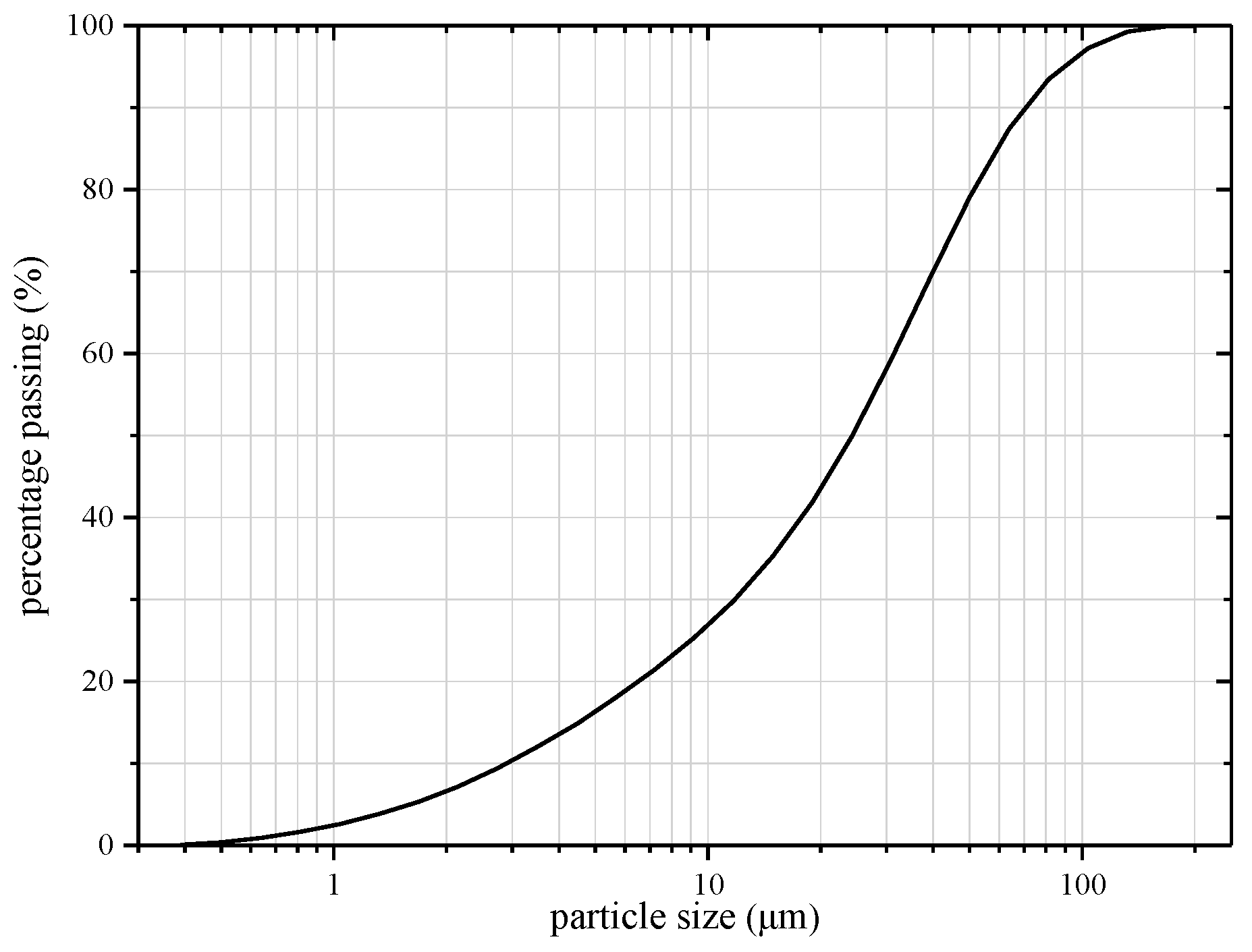



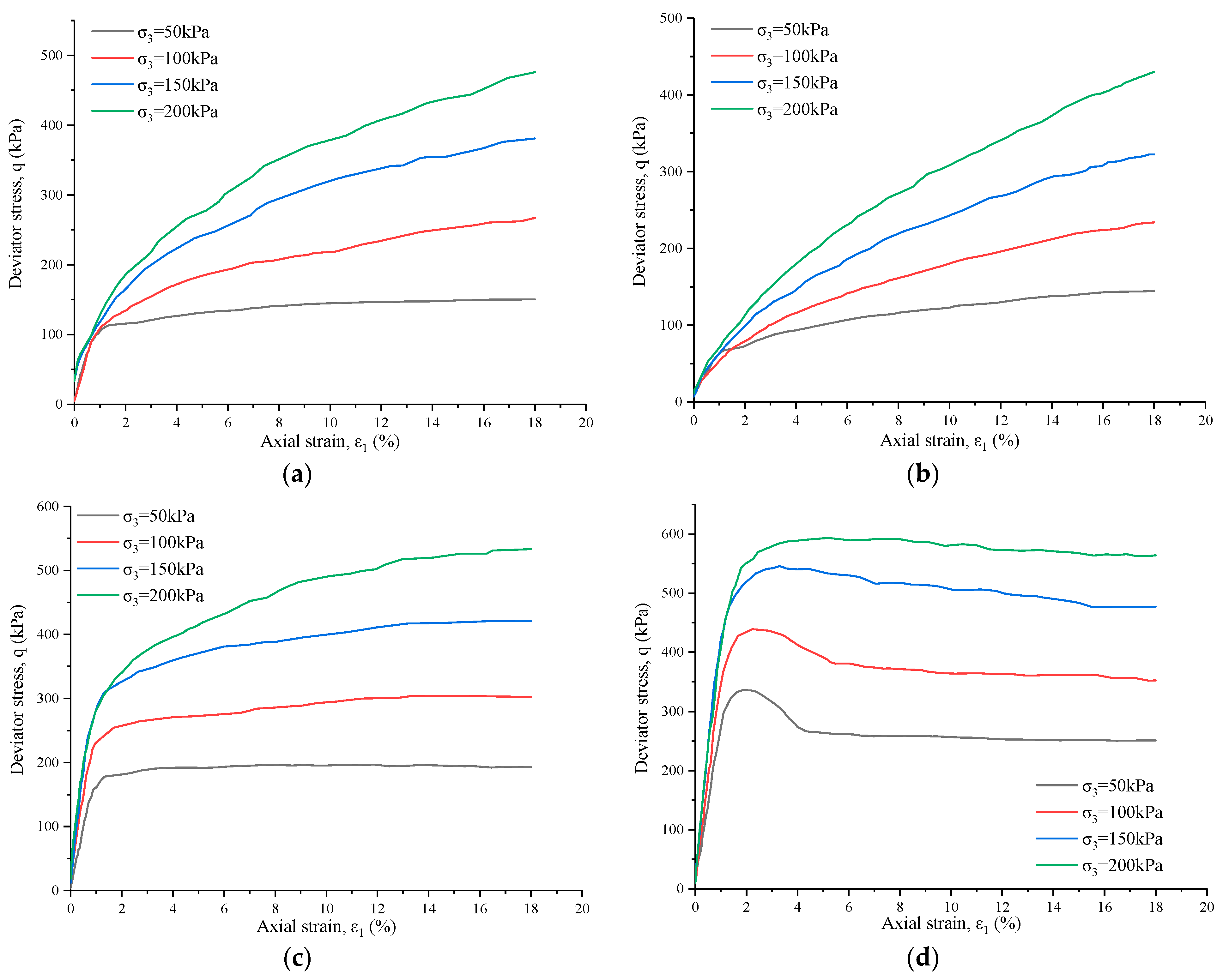
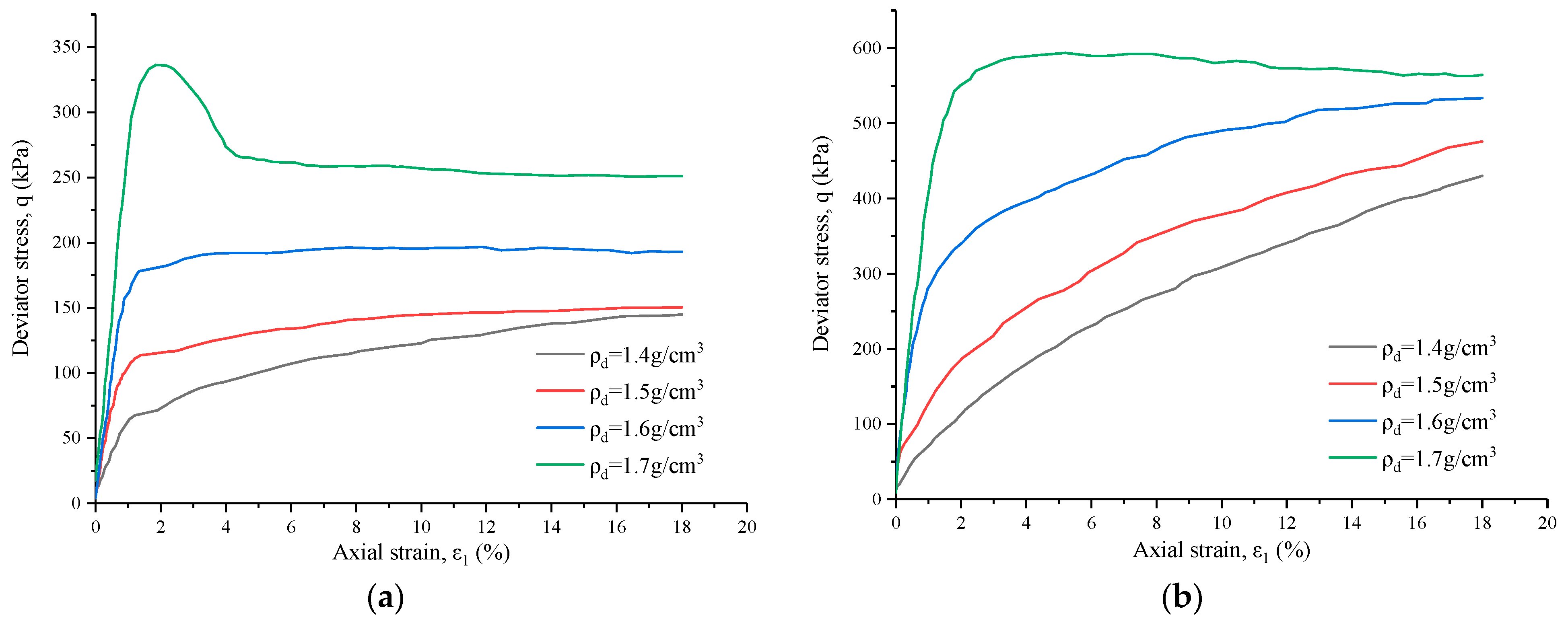
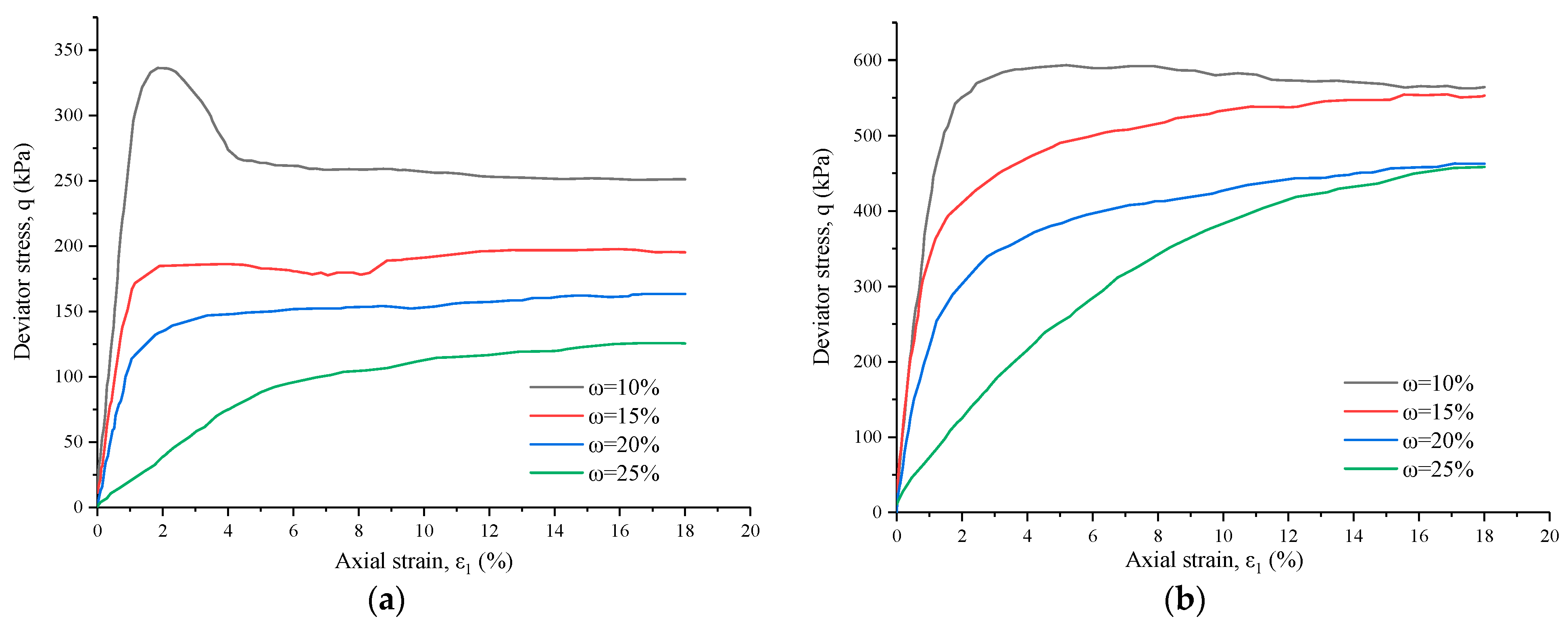
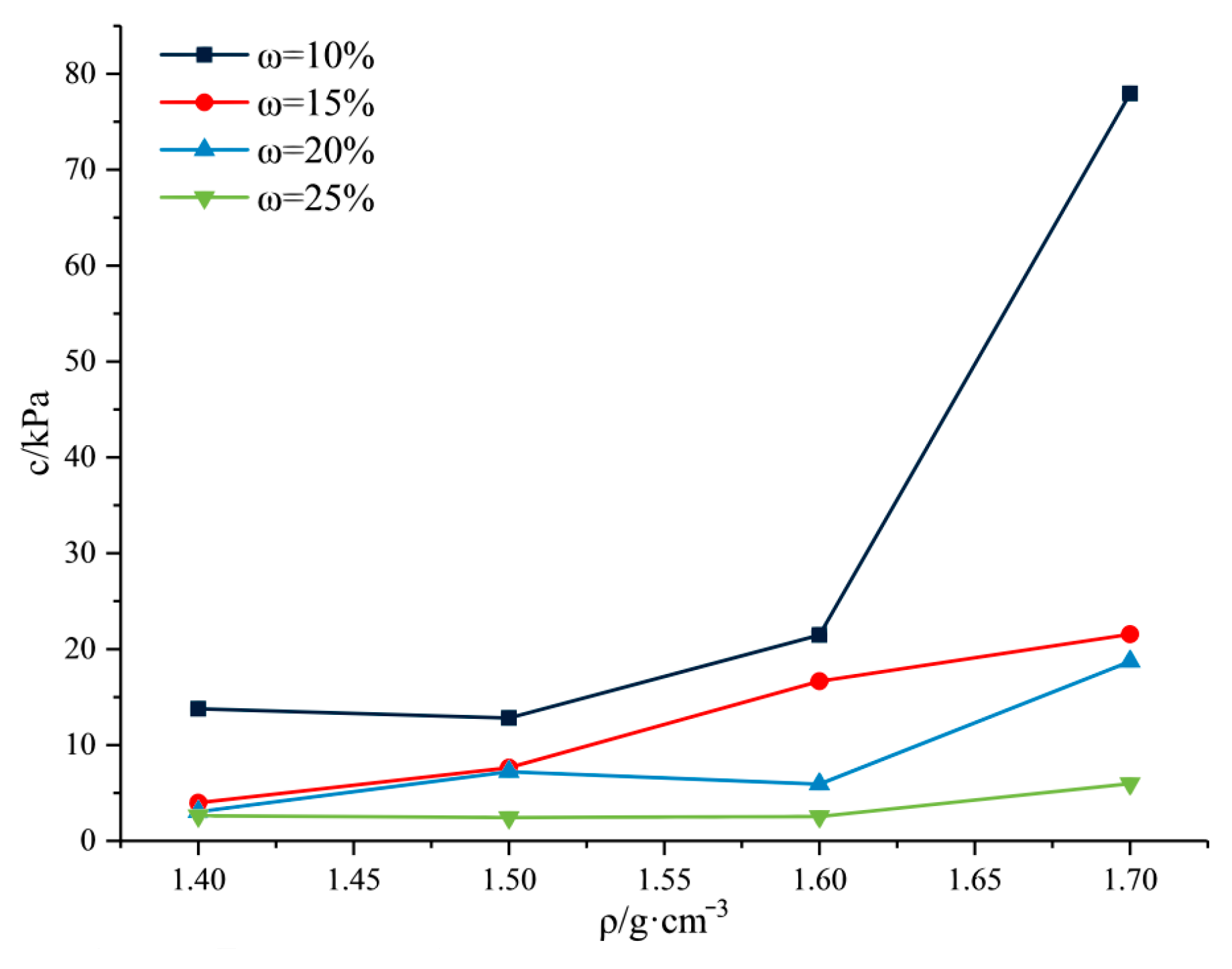

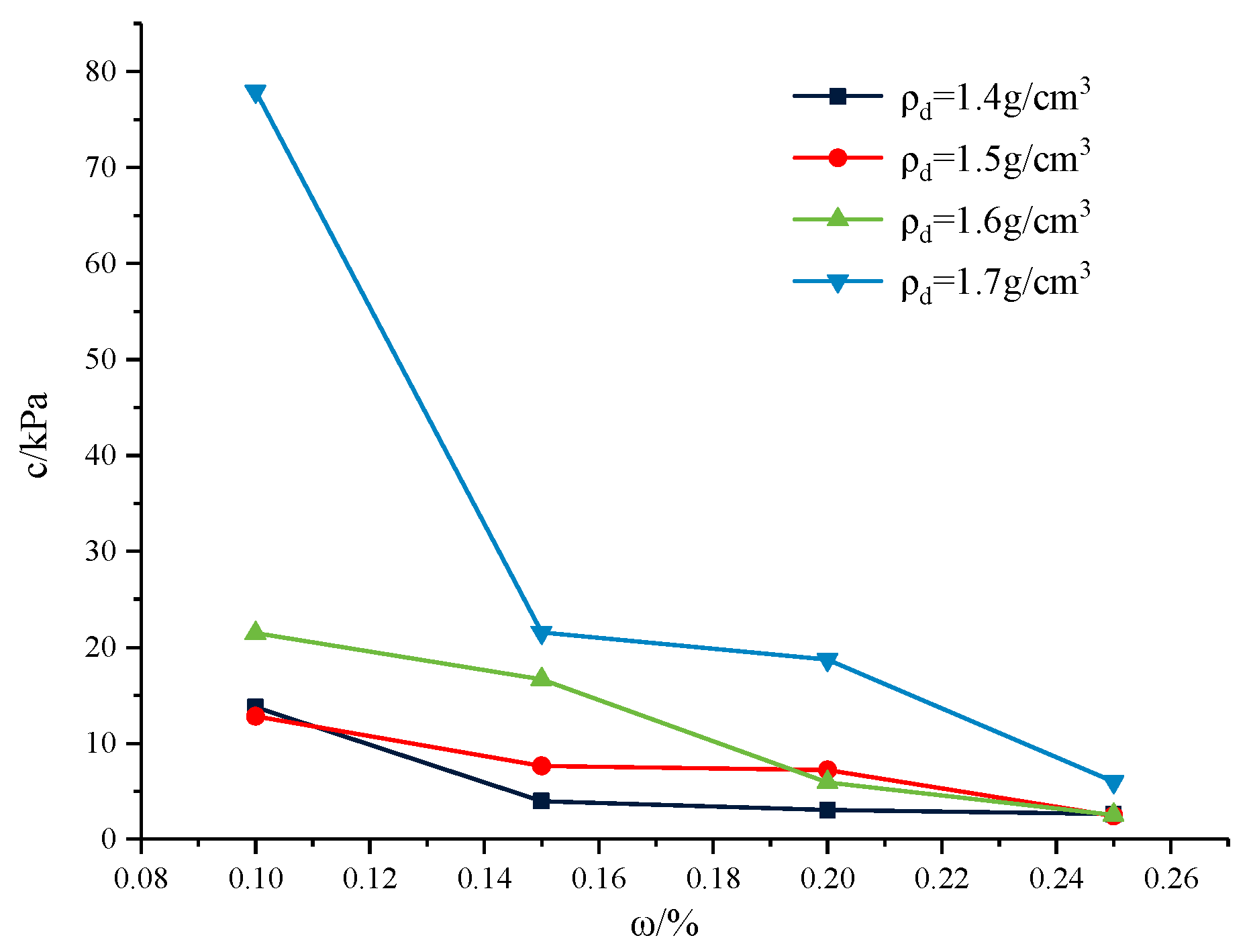

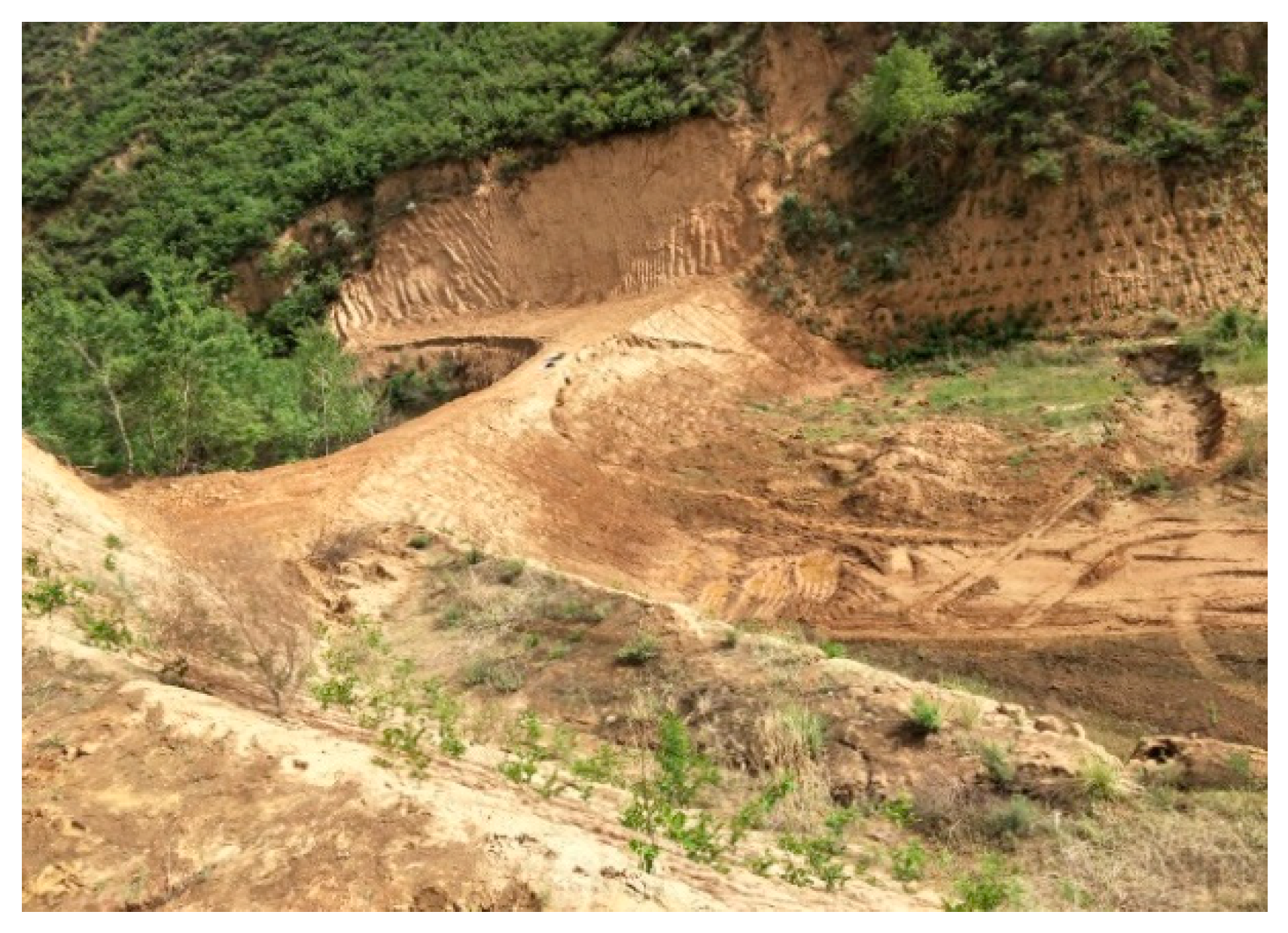
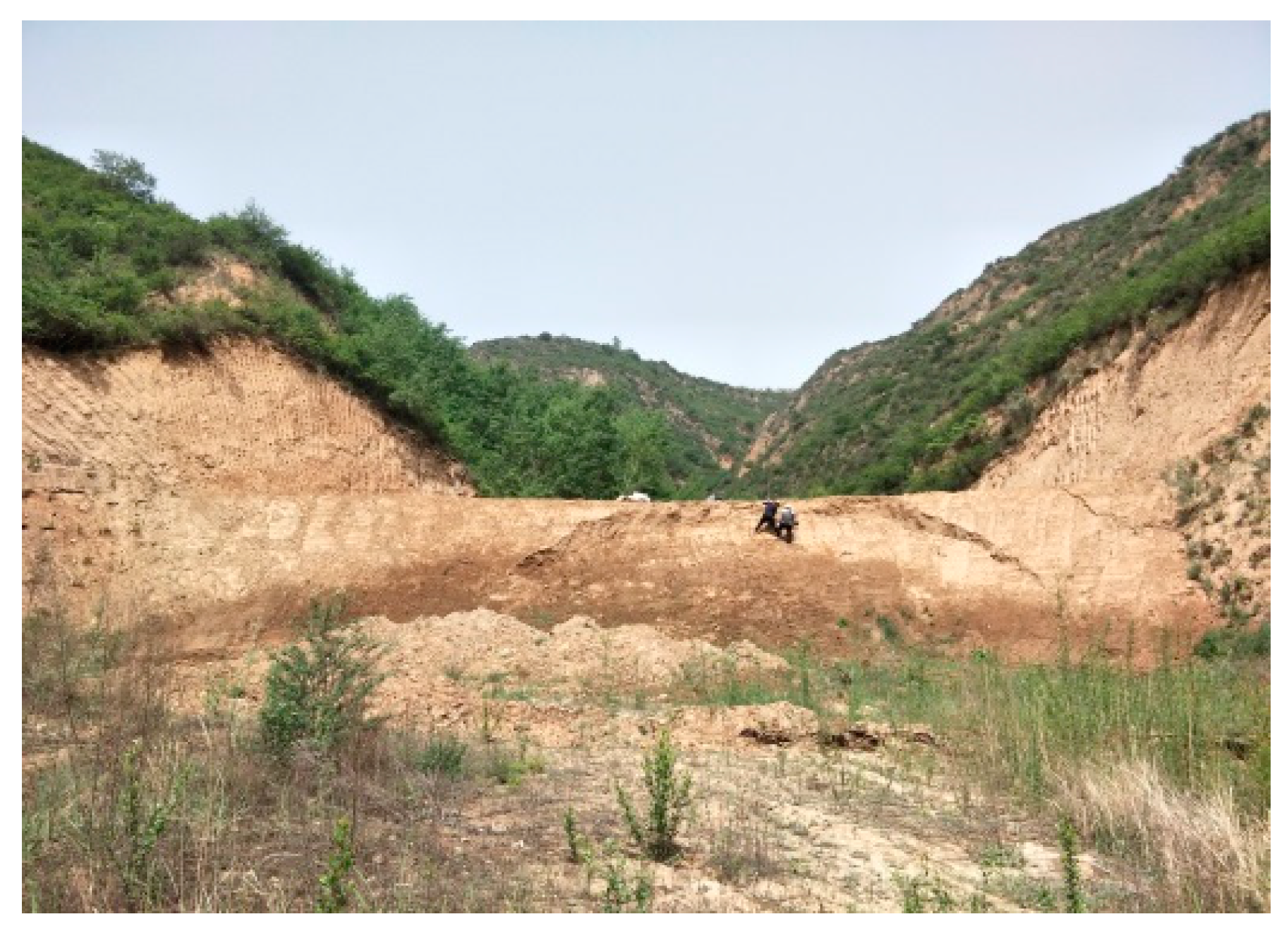
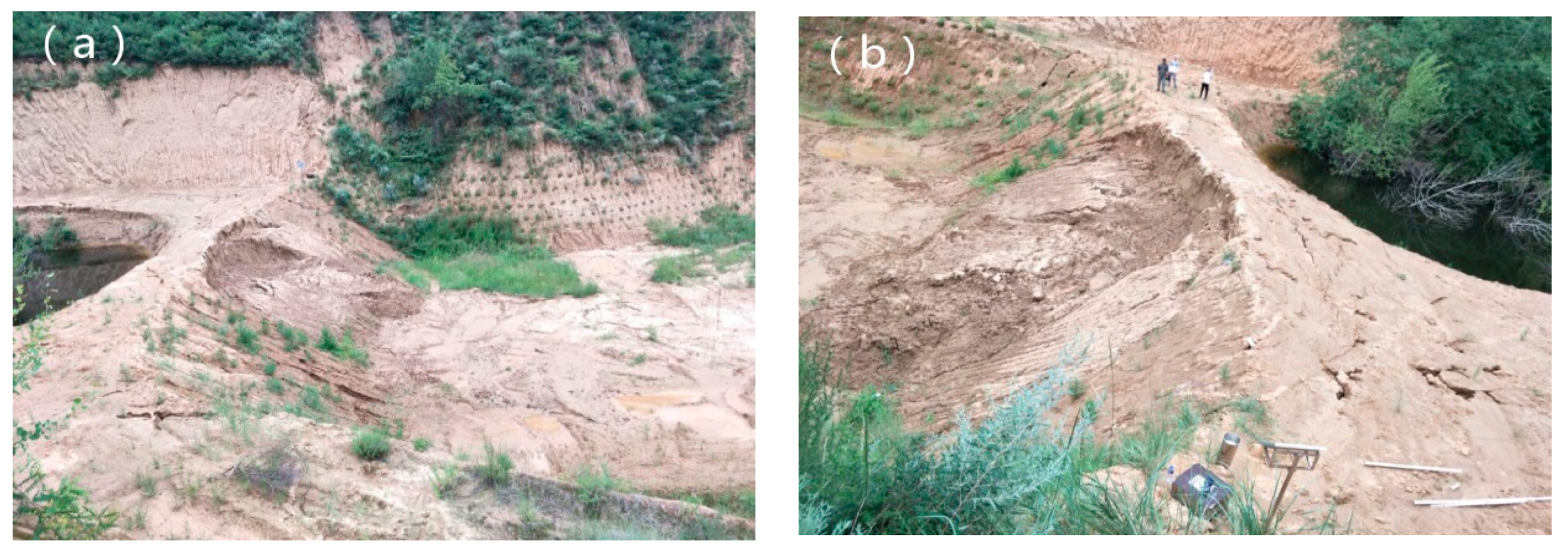
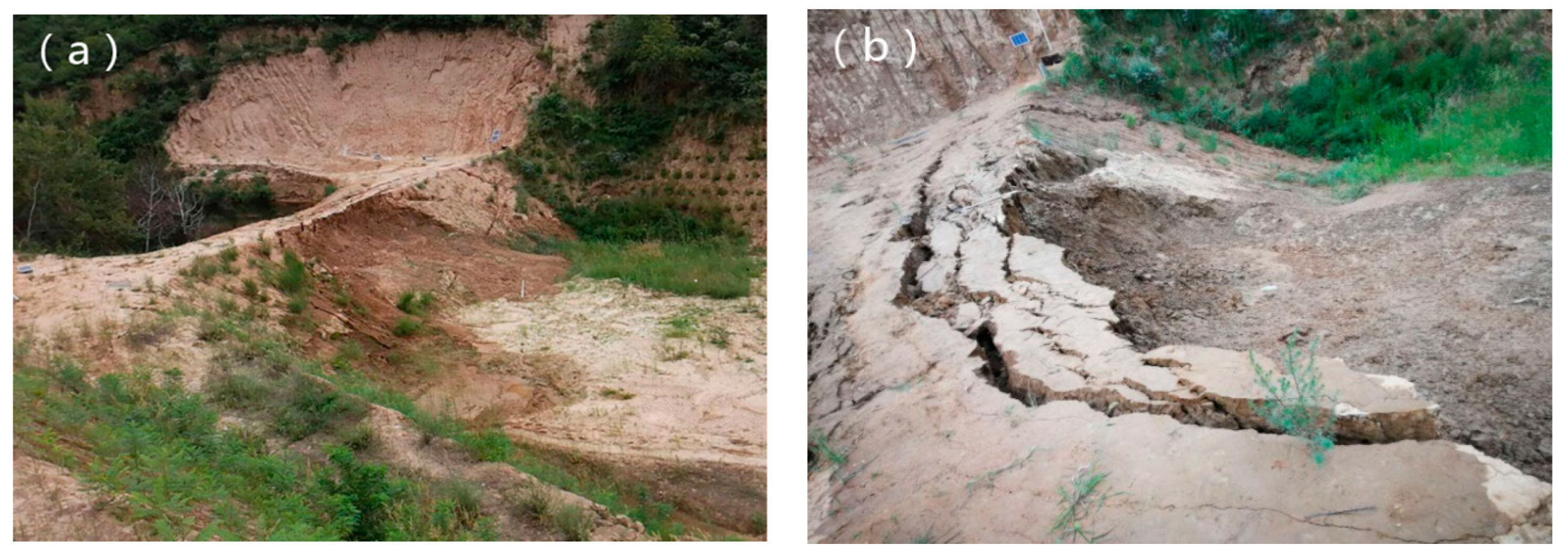
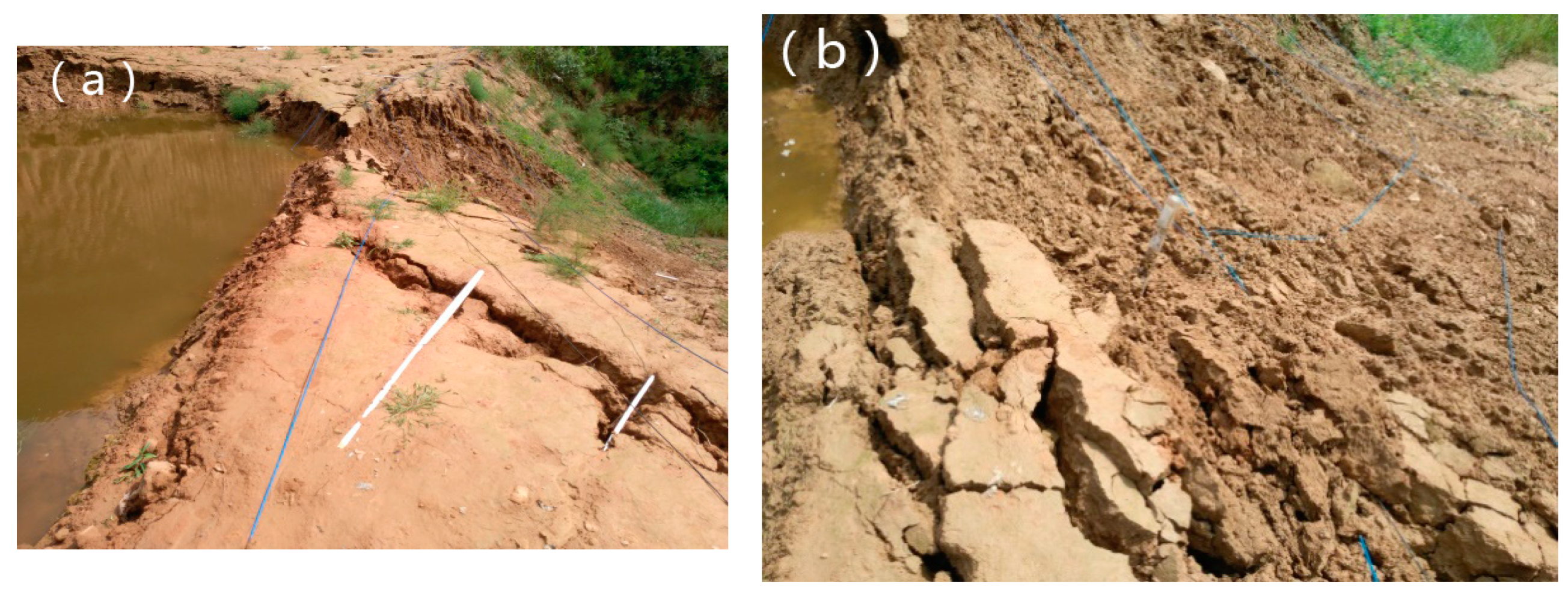
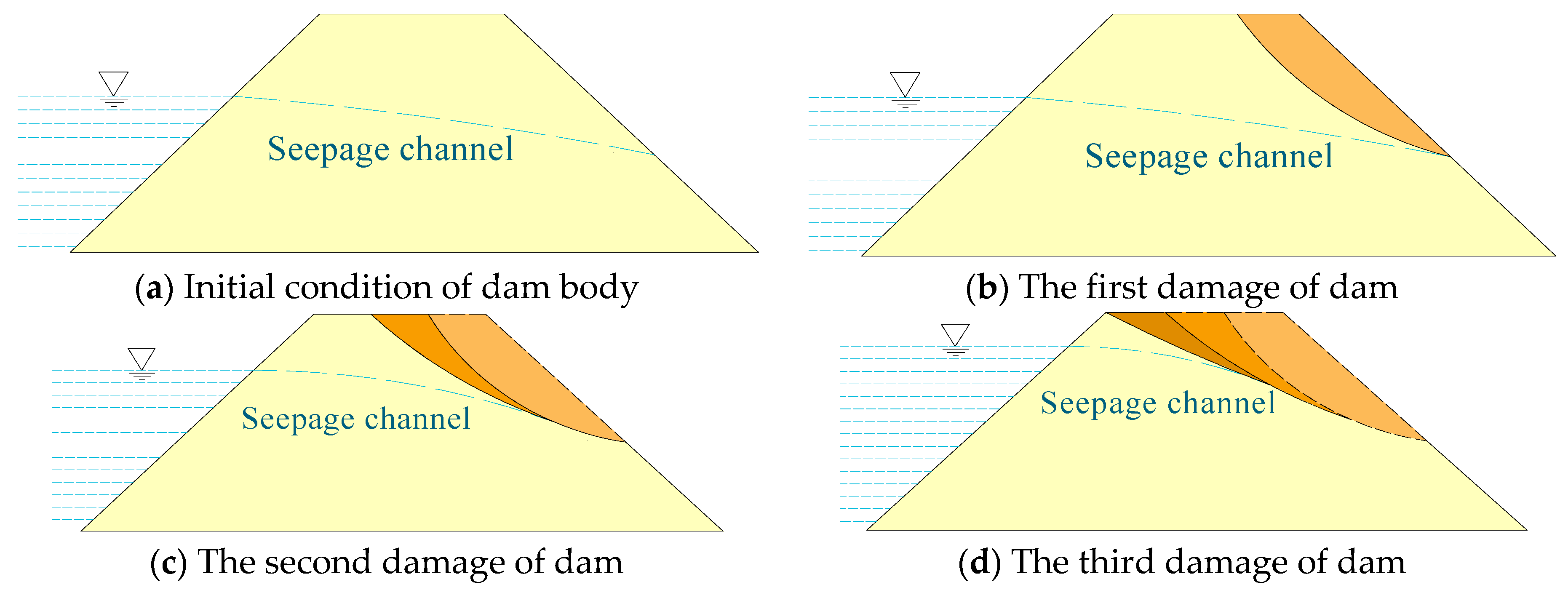
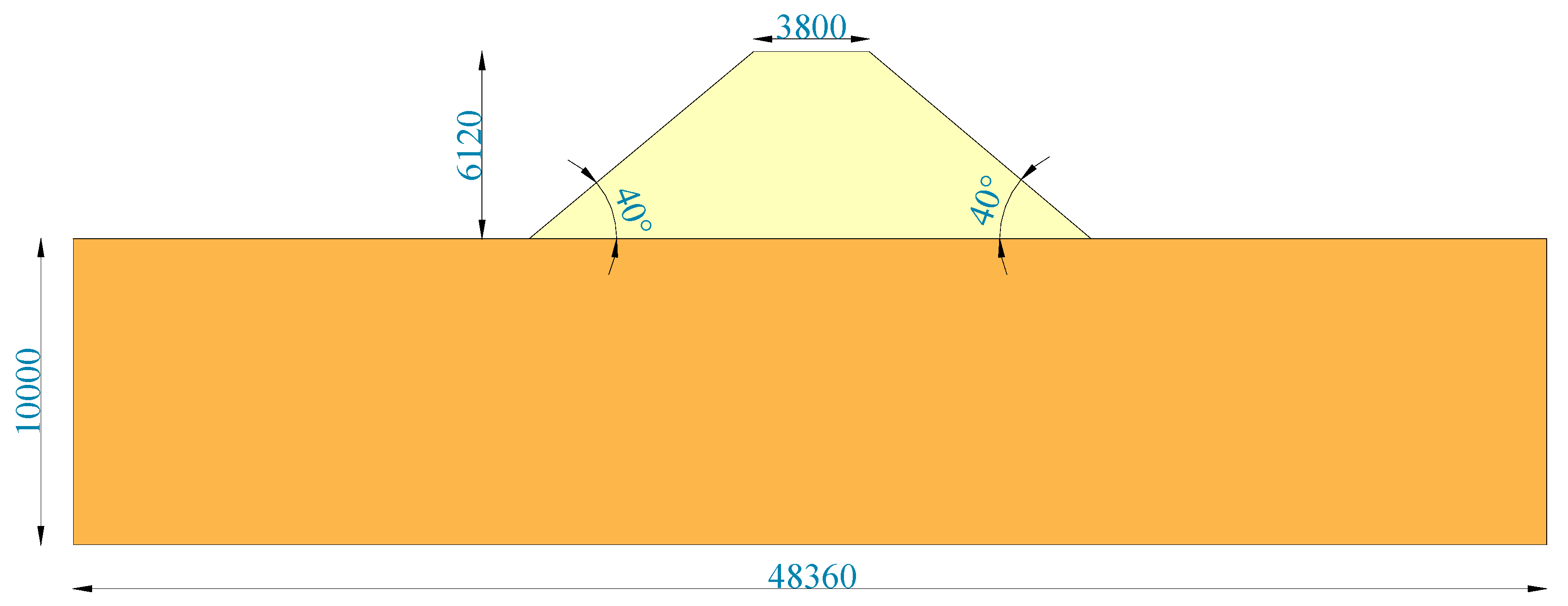
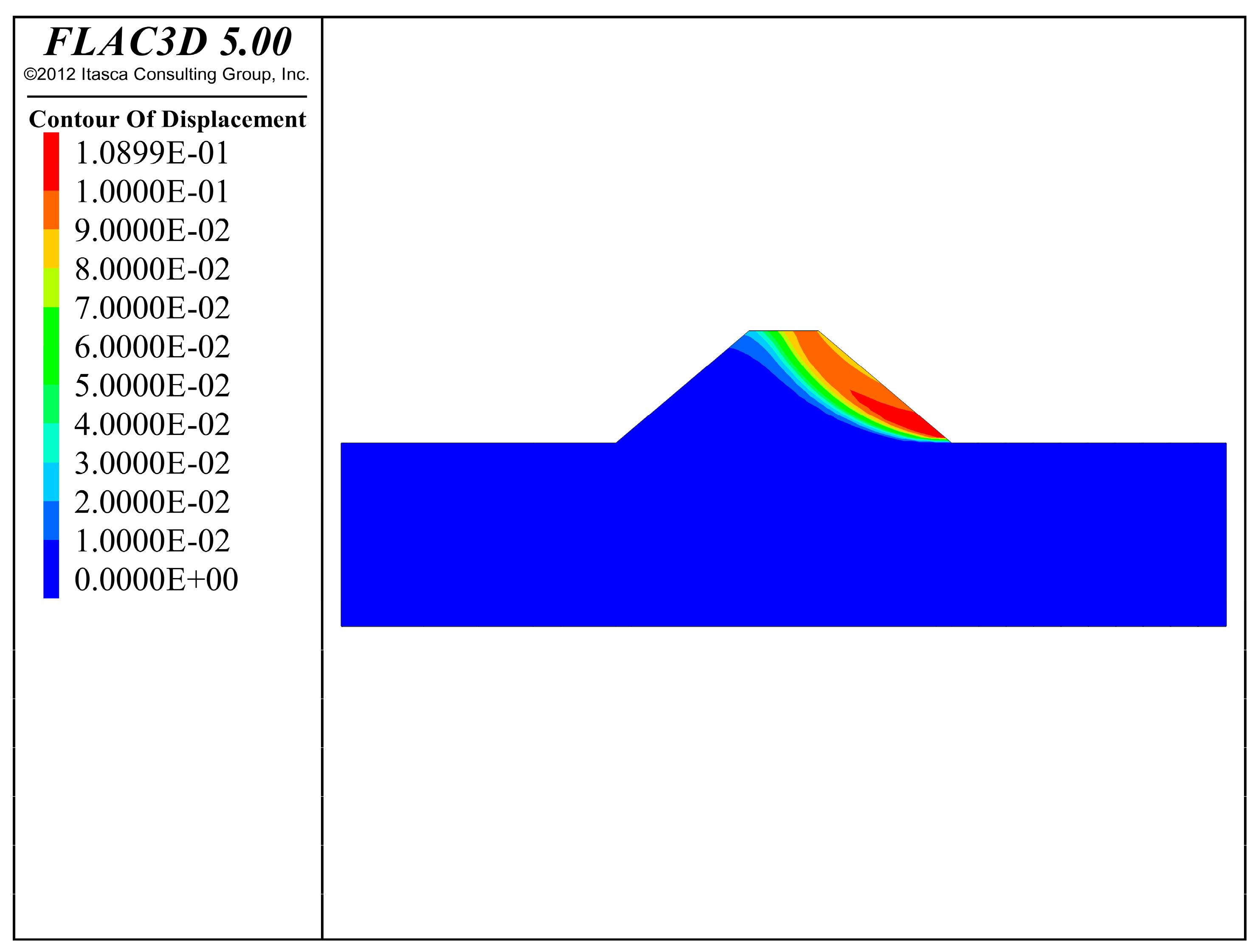



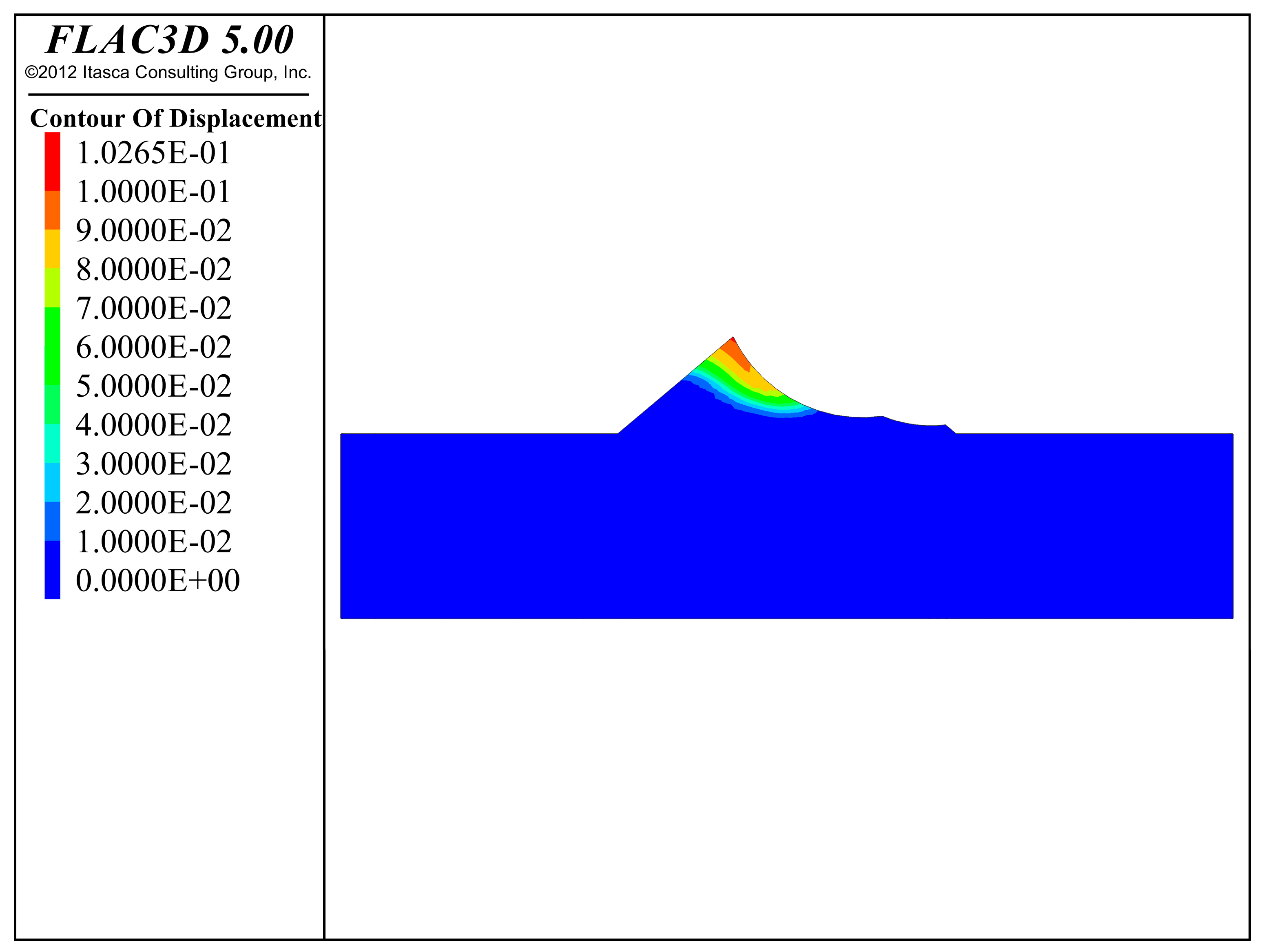
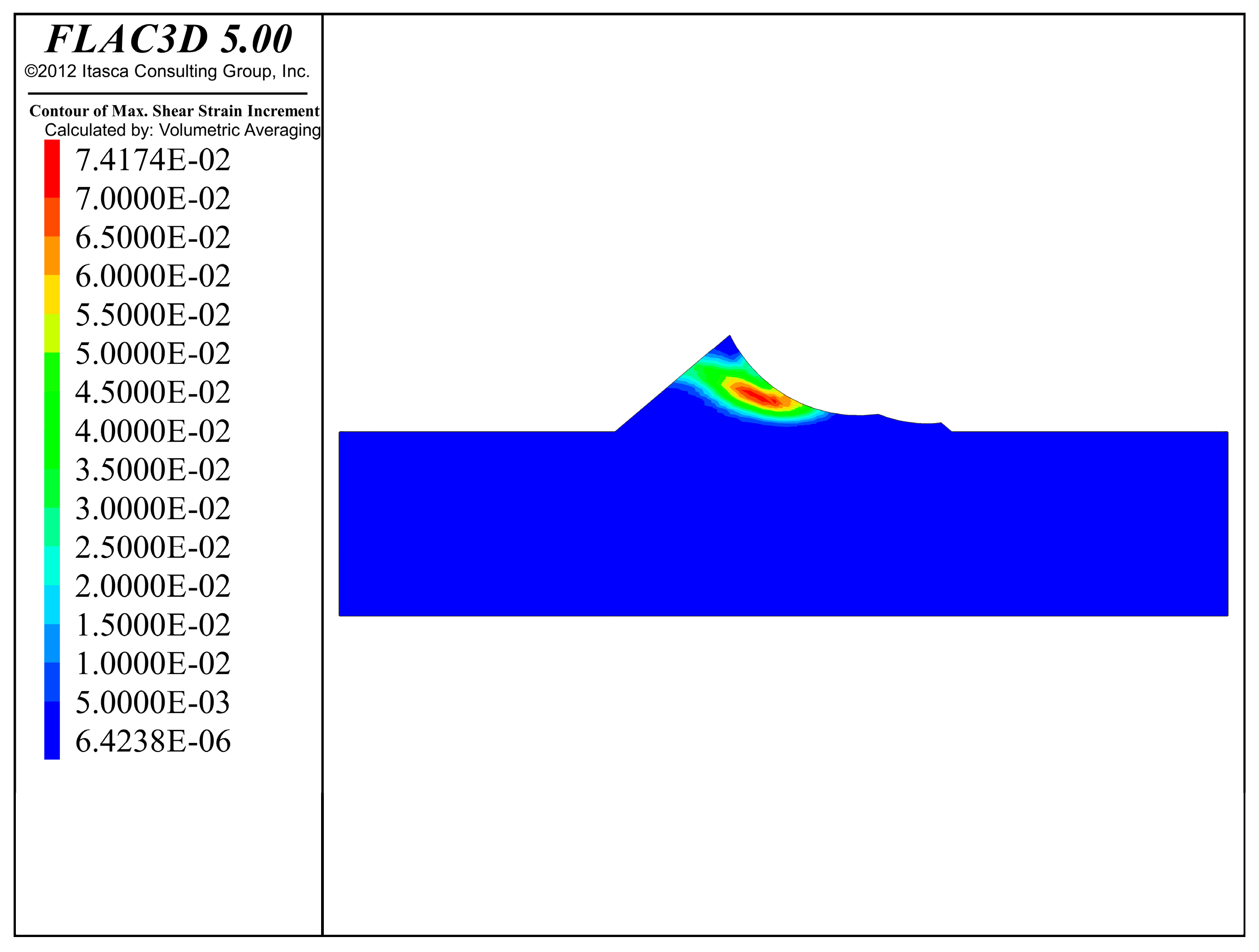
| Water Content/% | Dry Density/(g·cm−3) | Specific Gravity of Soil | Percentage of Soil Particles at Different Particle Sizes | ||||
|---|---|---|---|---|---|---|---|
| <0.002 mm | 0.002–0.075 mm | 0.075–0.25 mm | 0.25–0.5 mm | 0.5–2 mm | |||
| 14.97% | 1.557 | 2.71 | 5.72 | 83.01 | 11.27 | 0 | 0 |
| Assignment Parameters | Density/(g·cm3) | Bulk Modulus/MPa | Shear Modulus/MPa | Permeability Coefficient/(cm/s) | Dam Body Cohesion/(kPa) | Internal Friction Angle of the Dam/(°) | Foundation Cohesion /(kPa) | Friction Angle within the Foundation/(°) |
|---|---|---|---|---|---|---|---|---|
| Parameter value | 1559 | 23 | 9.46 | 2.09077 × 10−5 | 10 | 25 | 20 | 25 |
Disclaimer/Publisher’s Note: The statements, opinions and data contained in all publications are solely those of the individual author(s) and contributor(s) and not of MDPI and/or the editor(s). MDPI and/or the editor(s) disclaim responsibility for any injury to people or property resulting from any ideas, methods, instructions or products referred to in the content. |
© 2023 by the authors. Licensee MDPI, Basel, Switzerland. This article is an open access article distributed under the terms and conditions of the Creative Commons Attribution (CC BY) license (https://creativecommons.org/licenses/by/4.0/).
Share and Cite
Chen, N.; Li, Q.; Wei, W.; Zhao, D.; Wu, X.; Xu, J.; Nan, Y.; Niu, L. Study on Filling Material Strength and Dam Failure Characteristics of Loess Dam. Appl. Sci. 2023, 13, 8683. https://doi.org/10.3390/app13158683
Chen N, Li Q, Wei W, Zhao D, Wu X, Xu J, Nan Y, Niu L. Study on Filling Material Strength and Dam Failure Characteristics of Loess Dam. Applied Sciences. 2023; 13(15):8683. https://doi.org/10.3390/app13158683
Chicago/Turabian StyleChen, Nengyuan, Qiang Li, Wei Wei, Danni Zhao, Xiong Wu, Jiangbo Xu, Yalin Nan, and Ligang Niu. 2023. "Study on Filling Material Strength and Dam Failure Characteristics of Loess Dam" Applied Sciences 13, no. 15: 8683. https://doi.org/10.3390/app13158683
APA StyleChen, N., Li, Q., Wei, W., Zhao, D., Wu, X., Xu, J., Nan, Y., & Niu, L. (2023). Study on Filling Material Strength and Dam Failure Characteristics of Loess Dam. Applied Sciences, 13(15), 8683. https://doi.org/10.3390/app13158683







